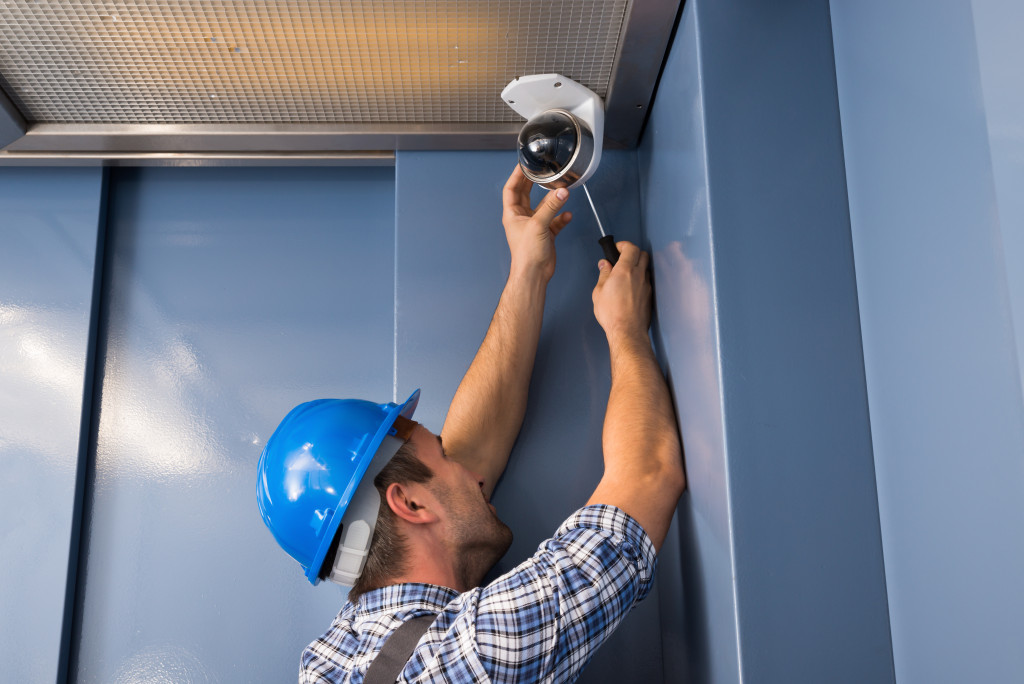- Invest in high-quality machinery and schedule regular inspections to ensure safe operations.
- Provide employee training on workplace policies, safety protocols and the proper use of PPE.
- Utilize audio or visual indicators to alert workers of potential dangers.
- Install security cameras to monitor activities, identify risks, and deter theft.
- Create a culture of safety awareness and conduct regular drills for reinforcement.
Ensuring workplace safety is an integral part of any successful manufacturing business. It’s essential to create a safe and healthy environment for your employees and protect your company from potential legal liabilities. Here are five tips to help you increase workplace safety for your manufacturing business.
1. Invest In High-Quality Machinery
High-quality machinery can help reduce the risk of workplace accidents by providing a more reliable and efficient way of producing goods. Investing in machinery tested for safety can help ensure that your equipment is up to standards and won’t malfunction or cause injury during operation. While purchasing safety-tested equipment can be costly, ensuring your employees are safe and your business is protected is worth the investment.
In the manufacturing industry, machines that are used for high-risk tasks like cutting or welding should likely be your most significant investment. These machines should be regularly inspected and maintained to keep them in top condition and reduce the risk of accidents. Equipment used for temperature control, storage, monitoring and other tasks should also be considered as part of your initial costs.
2. Provide Proper Employee Training

Proper employee training is vital in creating a safer work environment. Employees should be trained on properly using all the machinery they will be working with and standard safety protocols such as proper lifting techniques and protecting themselves from hazardous materials. In addition, it’s crucial to ensure that all employees know who their supervisors are and where they can find emergency exits in case of an emergency.
Wearing safety equipment (PPE)
Employees should also be educated about the importance of wearing protective equipment such as gloves, goggles, safety shoes and other items. Wearing PPE can help protect employees from potential injury or illness caused by hazardous materials they may encounter while working.
Clear policies and procedures
Educating employees on your workplace policies and procedures is also critical to creating a safe work environment. Ensure that all of your safety protocols are clearly communicated to all employees, so they know what’s expected of them in an emergency.
3. Utilize Audio or Visual Indicators
Audio or visual indicators can be used in the workplace to alert workers of possible danger before it occurs. This could include lights that flash when dangerous noise levels are reached or audible alarms that sound when hazardous materials are present. These alerts can provide valuable warning signs that allow workers to take necessary precautions before an accident occurs.
Investing in reliable industrial sensors with audio or visual signals can provide real-time feedback on the temperature, humidity levels and other conditions that may be unsafe for employees or cause damage to machinery. Photoelectric, wireless and RFID industrial sensors are also often used to detect hazardous conditions or alert workers when they are in an unsafe area.
4. Install Security Surveillance Cameras

Security surveillance cameras can be used in manufacturing businesses to monitor activities within the workplace and identify any potential risks before they become major problems. Cameras can also help deter theft or vandalism, especially if you have expensive equipment on site. Additionally, surveillance cameras may provide evidence should an accident occur. Hence, you have a record of what happened and why it happened so you can take steps to prevent similar incidents in the future.
Security camera systems can also measure employee productivity, track deliveries and shipments, monitor product quality control, and provide evidence if a worker is injured on the job. This can help you maintain accountability while providing valuable insight into your business’s daily operations. Surveillance cameras can also help identify safety hazards that may not be visible to the naked eye, such as a slippery surface or an unsecured machine.
5. Create A Culture Of Safety Awareness
Creating a culture of safety awareness is essential for reducing workplace accidents and ensuring everyone remains safe while on the job. Encourage employees to speak up if they notice any unsafe practices or procedures being followed by others and remind them always to follow safety protocols no matter their task. Additionally, ensure everyone knows their supervisor, so they have someone they can report any concerns to quickly and easily if needed.
Team building activities
Team building activities can also help promote a safe workplace environment. By engaging employees in activities requiring collaboration and communication, you can help foster an atmosphere of trust and respect among colleagues, reducing accidents.
Regular safety drills
It’s also essential to regularly hold safety drills, so employees are familiar with the correct protocols in an emergency. These drills should cover topics such as proper evacuation procedures, safe operation of machinery, and what to do if hazardous materials are present. While adequately training your employees does show them what to do in an emergency, drills help reinforce safety protocols and help workers respond more quickly and efficiently to any situation.
To Wrap Things Up
Ensuring workplace safety is essential for keeping your manufacturing business running efficiently and protecting your staff members and customers from harm or injury due to negligence in the workplace. Investing in high-quality machinery, providing proper employee training, utilizing audio or visual indicators, installing security surveillance cameras, and creating a culture of safety awareness are all effective ways to increase safety within your manufacturing business today.

